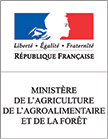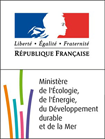How can we monitor REDD+ safeguards to respect local rights and promote local livelihoods?
Solution pitched at dragons den:
Social safeguards to ensure that local rights and livelihoods are not adversely affected by REDD+ implementation were defined at the UNFCCC COP in Cancun, but safeguard information systems (SIS) for reporting on national adherence to these safeguards are not yet operationalized. There are information gaps and barriers between national and subnational institutions, as well as inefficient and non-inclusive processes for the collection, verification, and reporting of data across administrative levels.
We believe that a bottom-up approach can allow us to gather a wide range of locally significant data to contribute to national-level aggregations, and propose an interactive mapping platform to present such multi-scalar data on both locally-defined indicators and national progress towards safeguards adherence. With the recent pledge of USD 5 billion from Germany, Norway and the United Kingdom to support ambitious REDD+ programs over the next five years, our proposal is an inclusive, transparent, and cost-effective way for countries to meet the imminent reporting requirements for performance-based payments.
How will the mechanism work?
- Local definitions of indicators for measuring adherence to social safeguards should be identified and agreed upon through multi-stakeholder workshops. This should include a prioritization of key indicators to ensure that measurements are locally relevant as well as feasible for measurement.2. The collection of data on these indicators should be done at district or municipal levels, taking advantage of existing social and institutional networks, such as farmers’ unions, women’s cooperatives, and indigenous community associations, to ensure an inclusive and diverse representation of local experiences at a subnational level. Such data collection can be observed and verified by civil society organizations and local universities; these actors can also provide methodological training in defining indicators and means of verification, as well as in data collection and analysis. National and international research institutes can also conduct top-down checks to ensure the accuracy of collected data through existing research processes. Following data collection, information will be reported to a national-level agency for aggregation to determine national progress towards guidelines on social safeguards.
3. Both sub-national measurements of locally-defined indicators as well as national progress in adhering to safeguards will be presented in the form of an interactive map to be made publically available on an online platform. Such a resource will represent national progress on each of the seven Cancun safeguards with a corresponding GIS layer, and will be overlaid upon existing maps of forest cover and land use change (such as that presented by Global Forest Watch) to integrate representation of social and environmental safeguard goals. This global map further allows for comparable assessments of national adherence to REDD+ safeguards. At the same time, the mapping platform allows users to scale down to examine rights and livelihood issues at district levels through their association with locally-prioritized indicators. This way, users can better understand local realities as well as verify data through an easily-understood visual platform, thereby ensuring overall inclusiveness and transparency of the data collection and reporting process.
Responses to panel feedback
- What considerations should we make for the role of tenure rights in safeguard information systems?
Although secure tenure rights are necessary to ensure that REDD+ targeting occurs in an equitable and effective manner, a safeguard information system is only able to reflect and report on the presence, absence, or conflict hotspots over such rights rather than instigating their establishment in the first place. Nonetheless, should tenure security (whether measured in terms of land certificates issued or relevant laws passed, for instance) be chosen as a safeguard indicator, reporting on national adherence to safeguards can create the preconditions in which local property rights may be officially recognized. Indeed, as this platform will be easily accessible online and easily understood in terms of its visual communication of data, there will be more popular pressure on national governments to ensure that tenure rights are in place for REDD+ implementation.
- How can the platform represent both qualitative and quantitative data?
Measurements of social safeguards indicators will be collected in both qualitative and quantitative forms; both types of data can be represented at district or municipal levels through the integration of metadata (text with visual overlays of statistical data). Visual reporting of indicator measurements can also allow both qualitative and quantitative data to be translated into a common scale (for instance, from good-1 to bad-5), and thereby expressed with specific colour-codes. Such visualization technologies can also present information on both the current state of safeguard indicators and trends over time, with users able to view mapped changes in a time-lapse mode.
- How much will this program cost?
By leveraging existing institutional networks and processes for data collection, the proposed SIS mechanism should not incur significant additional costs for implementation. We imagine the chief costs to lie in the national-level aggregation of reported data within a globally-shared and officially recognized mapping platform; however, we intend to leverage private-public partnerships to reduce technical costs at the country level. For instance, existing mapping softwares created by Google and the Global Forest Watch can be made available at low costs and with low barriers to adoption to developing country governments for the integration of social safeguards data. Moreover, partnerships with mobile providers could also facilitate the free distribution of an app for users to access the platform on their individual devices, thus supporting both grassroots data collection and verification.
- How will data quality be ensured?
By allowing for local prioritization of key indicators rather than providing lists of hundreds of nationally-derived indicators, data collection will be more efficient and less prone to error. Moreover, data collection can be conducted in the presence of external observers, whether civil society organizations or research institutions, to ensure that such processes are not unduly influenced by external interests. Finally, data will be verified through both top-down and bottom-up processes upon their initial entry in the mapping platform: national agencies can compare data with existing statistical information while local communities can also provide input into the accuracy of collected data.
Challenge statement:
In the Rights and Tenure Landscape Challenge, we are asking youth around the world to identify innovative technologies and approaches to incorporate local people and local level information into national REDD+ Safeguard Information Systems (SIS), with the ultimate goal of securing local rights and promoting livelihoods.
Forests cover approximately one third of the earth’s total land area, supporting two thirds of the world’s terrestrial biodiversity and providing a range of important ecosystem functions. Forests also provide multiple important benefits for people, with over one billion people directly relying on forests for food, shelter, energy, and income generation.

Deforestation and forest degradation not only threaten biodiversity and local livelihoods, but also account for up to 20% of global greenhouse gas emissions, second only to the energy sector. Tackling this ongoing loss of forests will be critical to efforts to combat climate change.
Reducing Emissions from Deforestation and forest Degradation, or REDD+, aims to mitigate climate change, conserve forests and develop livelihoods by making forests worth more standing and sustainably managed, than cut down (more information and recent developments in REDD+ in these links).
 Yet REDD+ has many potential risks; that economic benefits are not shared equitably, or that REDD+ initiatives won’t respect the rights of local people that live in and depend on these forests.
Yet REDD+ has many potential risks; that economic benefits are not shared equitably, or that REDD+ initiatives won’t respect the rights of local people that live in and depend on these forests.
To address these concerns, in 2010 parties to the UNFCCC agreed on a set of seven safeguards to ensure that REDD+ does no harm to local people and the environment. These safeguards focus on issues such as transparent governance, rights, and participation, and outline the standards that must be met by all REDD+ initiatives.
Before REDD+ countries receive payments for conserving forests, they must be able to demonstrate how these safeguards are being ‘addressed and respected’, and develop a ‘Safeguard Information System’ (SIS) to monitor and report on the outcomes of REDD+.
For example, demonstrating ‘participation’ might involve collecting data on the extent to which minority groups actively participate in village meetings and decision-making.
But this is not as straightforward as it may sound. Countries need to first interpret safeguards in their local contexts, decide what information to collect and how, then collect data from different stakeholders at different scales; and herein lies the challenge.
Collecting, monitoring and reporting on this data can be expensive. Many countries are concerned that they won’t have the financial resources or capacity to implement these requirements, particularly given the lack of funding or guidance for SIS. Key questions also remain as to how national SIS can link with existing data collection efforts and adequately reflect local level conditions.
Youth are in a unique position to address these challenges; youth occupy multiple spaces as increasingly interdisciplinary students, members of local communities and as young professionals. Young researchers and practitioners may be able to spend more time in the field – and less time behind their desks – giving them a better appreciation of current challenges faced by rural people and the potential to drive community information collection. Youth also have the comparative advantage of being skilled with emerging information and communication technologies (ICT) and used to sharing information rapidly and across scales.
So, how might we use these ICT tools and interdisciplinary approaches to collect and organise local level data and link these into national SIS and global decision-making systems, in order to secure the rights and participation of local people in REDD+?
JOIN US IN PARIS TO TACKLE THIS CHALLENGE
Further reading:
Challenge mentors:
AMY DUCHELLE is a Scientist at the Center for International Forestry Research (CIFOR) in Indonesia. She has worked with rural communities in the Amazon for nearly 15 years, seeks innovative ways to engage local people in research, and believes that nature conservation and human wellbeing must go hand-in-hand. She currently analyzes the effectiveness, efficiency, equity, and co-benefits of sub-national REDD+ initiatives in six countries as part of CIFOR’s Global Comparative Study on REDD+ . Amy was also one of our youth speakers at the first GLF (see her speech here).
ASHWIN RAVIKUMAR is a post-doctoral research fellow who has been working with CIFOR for over two years. With CIFOR, he has studied how global environmental initiatives, like REDD+, interact with the real politics of what’s happening on the ground in Peru, Indonesia, Mexico, Tanzania, and Vietnam (roughly in order of how much he knows about these issues in each country). More broadly, he’s interested in questions about environmental justice, inequality, and how different approaches to development deliver environmental, livelihoods, and broader societal well-being outcomes. His perhaps not-so-extra curricular interests include local energy reform, new urbanism, racial justice, and innovative technologies of democracy. Ashwin was a mentor at last year’s GLF youth session – watch his reflections here.
Challenge partner:




































